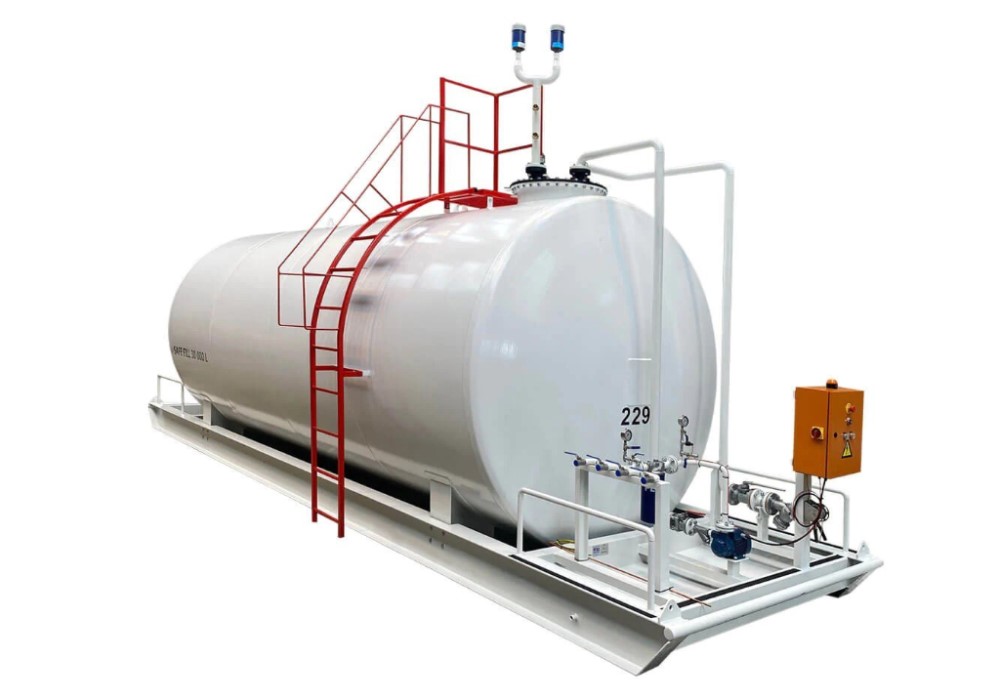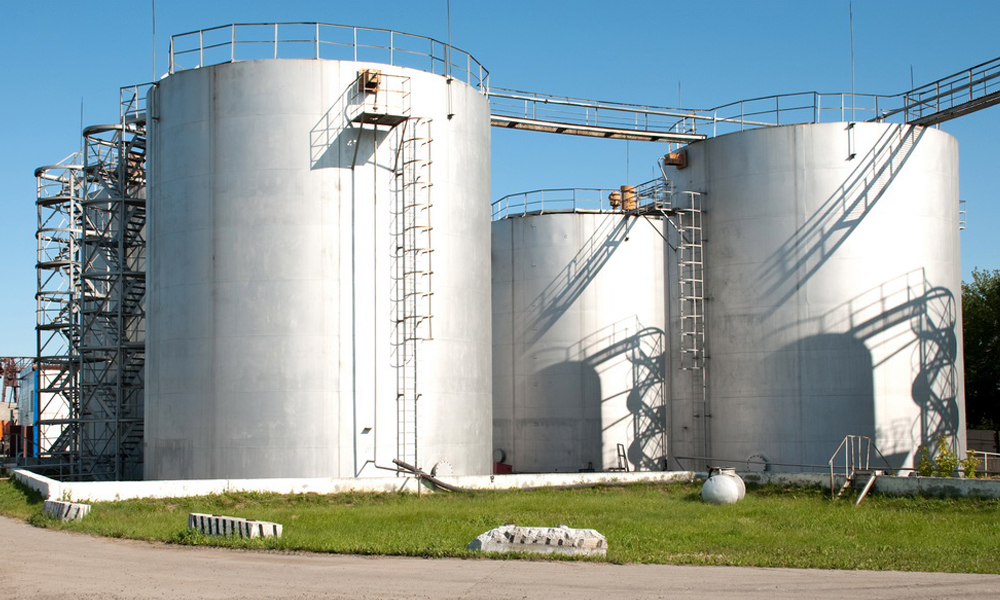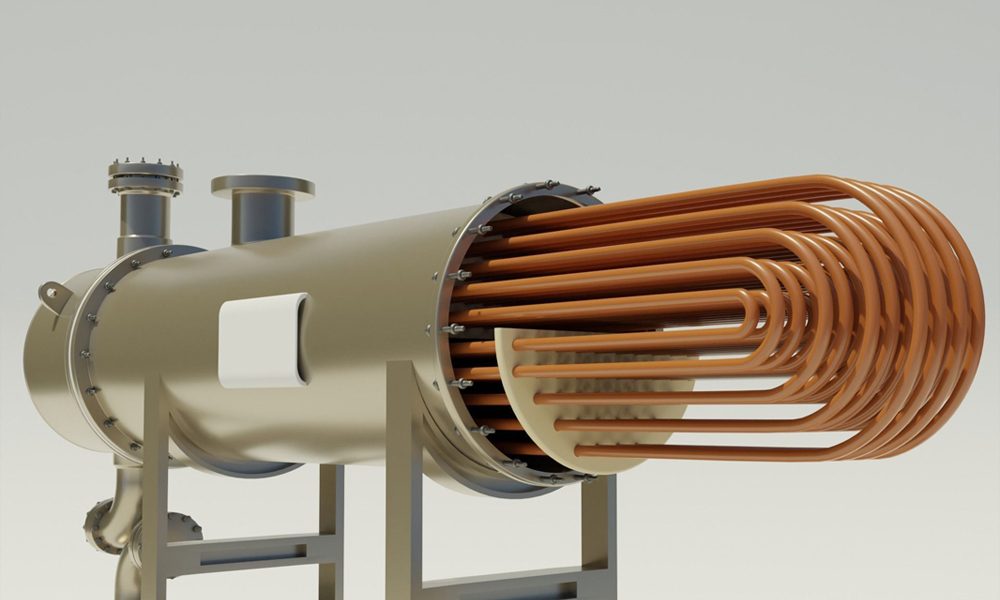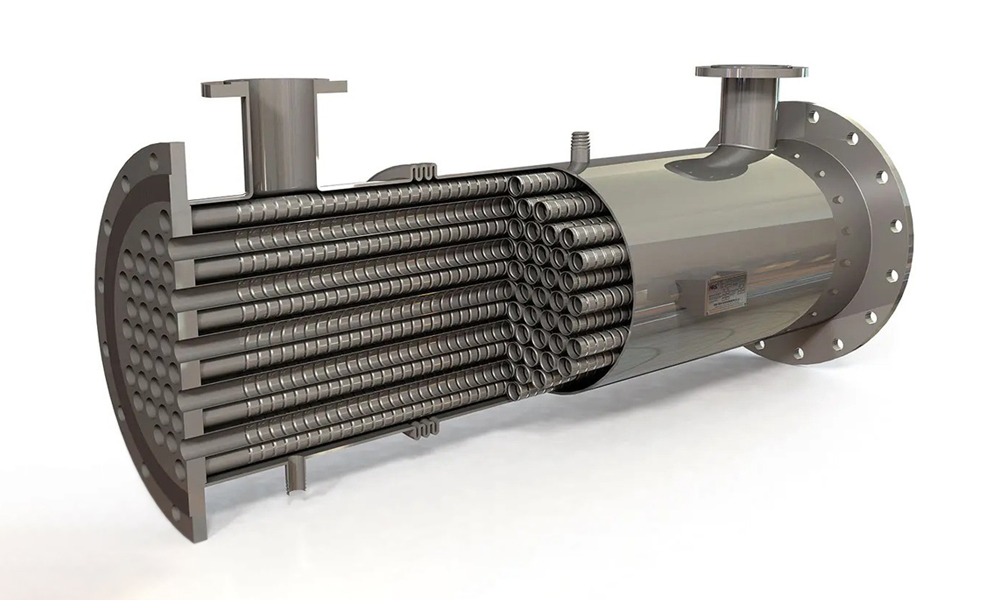In the oil, gas, and petrochemical industries, Pressure Storage Tanks (Vessels) are among the most critical equipment for ensuring safety, efficiency, and product quality. Petrosazeh Beinolmelal Aram (IPS), as a leader in the design, fabrication, and maintenance of industrial equipment, consistently emphasizes the importance of proper cleaning and maintenance of these tanks.
This article provides a comprehensive overview of the cleaning process for pressurized storage tanks. Our goal is to share technical knowledge and practical experience so that industry managers and engineers can extend equipment lifespan, ensure worker safety, and prevent environmental damage.
Since the stored materials often include gases, chemicals, and hydrocarbons, periodic cleaning of tanks is essential. It prevents deposit buildup, internal pressure reduction, corrosion, and ultimately, potential hazards.
Importance of Cleaning Pressurized Storage Tanks
Tank cleaning is a preventive and vital measure—not just a routine task. IPS’s experience shows that neglecting this process can lead to irreparable consequences such as chemical leaks, explosions, and equipment failure.
These tanks are designed to withstand high pressures; however, the accumulation of mineral deposits, chemical contaminants, or oily layers can weaken their structural integrity.
Furthermore, regular cleaning helps preserve the quality of stored materials. For example, in the chemical industry, deposit buildup can alter product composition, leading to contamination and significant financial losses.
From an environmental standpoint, preventing soil and water contamination through leaks is one of the key benefits of proper cleaning. For this reason, Petrosazeh Beinolmelal Aram strongly recommends tank cleaning as part of a preventive maintenance (PM) program in compliance with international standards.

Cleaning Methods
The choice of cleaning method depends on the type of tank, wall material, operating conditions, and the nature of stored materials:
- Manual Cleaning: Entry of personnel into the tank to clean walls using brushes and detergents. Suitable for small tanks but highly risky, requiring full PPE.
- High-Pressure Mechanical Cleaning: Use of rotary nozzles or high-pressure water jets, available in different classes for light to heavy deposits.
- Chemical Cleaning: Application of acidic or alkaline solutions to dissolve deposits, often combined with mechanical methods.
- CIP (Clean-in-Place) Systems: Cleaning without opening or relocating the tank, minimizing downtime and improving safety.
- Smart Cleaning with Simulation Software: Tools such as TankClean simulate tank geometry to design optimal spray patterns, particularly for tanks with internal obstructions.
Chemicals Used in Cleaning
Selecting cleaning agents requires careful consideration to remove deposits without damaging tank walls:
- Stainless steel tanks: Diluted phosphoric or citric acid for mineral deposits.
- Organic contamination (oil & grease): Strong alkaline detergents.
- Hard mineral deposits: Strong acidic solutions.
- Food and chemical industries: Industrial disinfectants to remove microorganisms.
- Fiberglass or plastic tanks: Mild detergents compatible with the tank material.
Concentration and temperature must follow manufacturer guidelines, and thorough rinsing is essential.
Cleaning Intervals
Cleaning frequency depends on application:
- Water tanks: Typically once per year.
- Oil or chemical tanks: Every six months or less, depending on contents.
- Corrosive or aggressive substances: Every 3–6 months.
- Before product changeover or regulatory inspections: Mandatory.
At IPS, scheduling is based on API 653, which recommends internal inspection every 10 years for well-maintained tanks.
Impact of Stored Materials on Cleaning Process
The type of stored substance dictates the cleaning method and chemicals:
- Oily and greasy materials: Alkaline detergents.
- Mineral deposits: Acidic solutions.
- Aggressive chemicals: Controlled methods with corrosion-resistant equipment.
IPS always performs a detailed material analysis before cleaning to minimize risks of unwanted reactions or hazardous gas emissions.
Required Equipment
Key equipment for effective tank cleaning includes:
- Fixed or rotary spray nozzles (various classes depending on contamination level)
- High-pressure pumps
- CIP systems for non-entry cleaning
- Safety gear such as respirators, harnesses, and gas detectors
- Vacuum trucks for sludge removal
- Venting systems for degassing
Common Challenges & Solutions
Confined space entry risks (asphyxiation, explosion):
- Use automated 3D cleaning systems.
Chemical waste management (environmental risks):
- Use eco-friendly detergents and water recycling systems.
High costs:
- Invest in advanced equipment that reduces long-term expenses.
Safety Standards
Strict compliance with OSHA and API 653 is mandatory:
- Use of PPE
- Degassing to safe levels (LEL < 10%)
- Continuous monitoring of oxygen and pressure
- On-site rescue team presence
- Pre- and post-cleaning inspections
Economic & Environmental Benefits
Routine cleaning reduces repair costs, extends tank lifespan, and prevents unexpected shutdowns.
Environmentally, it prevents soil and water contamination and reduces the risk of legal penalties. Adopting eco-friendly cleaning agents reflects a sustainable and responsible industrial approach.
Conclusion
Cleaning and maintenance of pressurized storage tanks are operational imperatives in oil, gas, petrochemical, and chemical industries. Proper and regular implementation enhances worker safety, extends equipment life, and lowers maintenance costs.
With international standards, advanced equipment, and expert teams, Petrosazeh Beinolmelal (IPS) delivers optimal cleaning and maintenance solutions—allowing clients to focus confidently on productivity and business growth.







